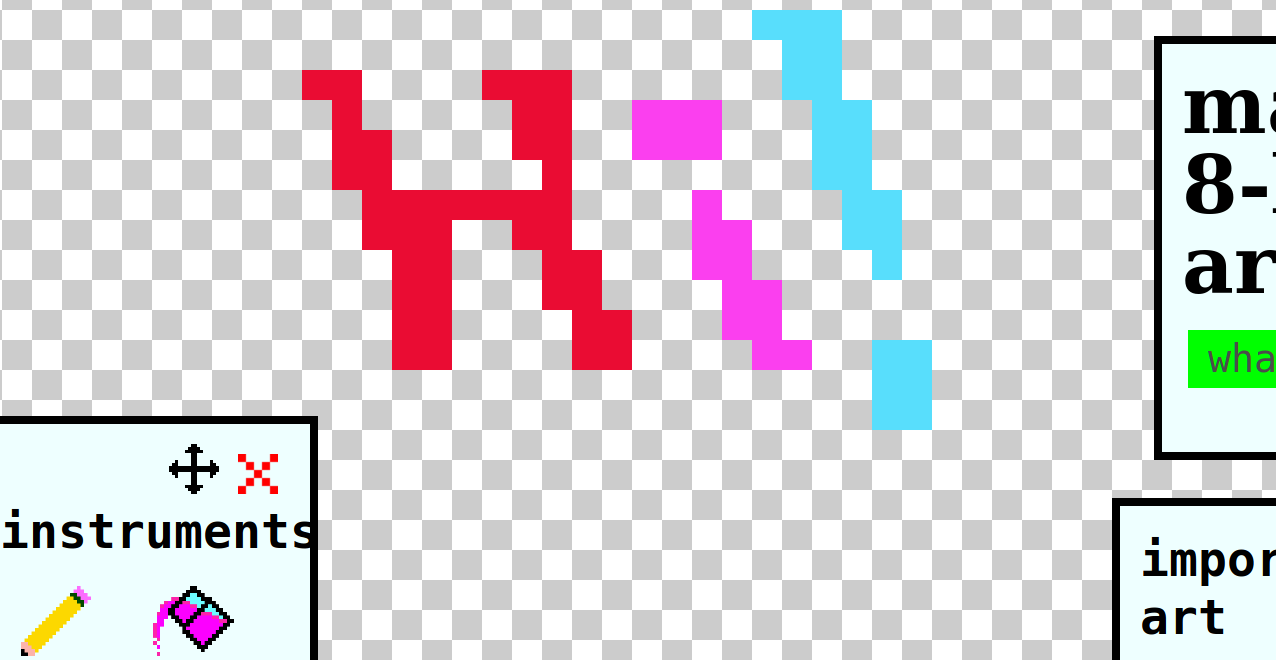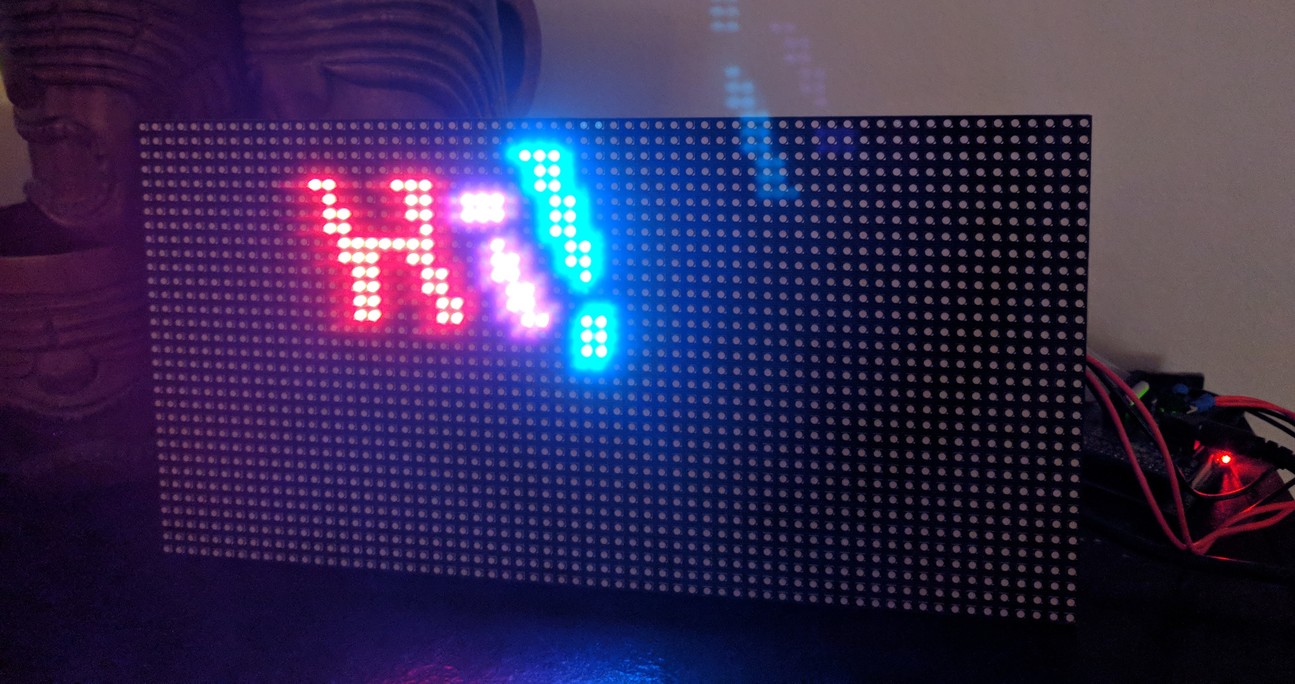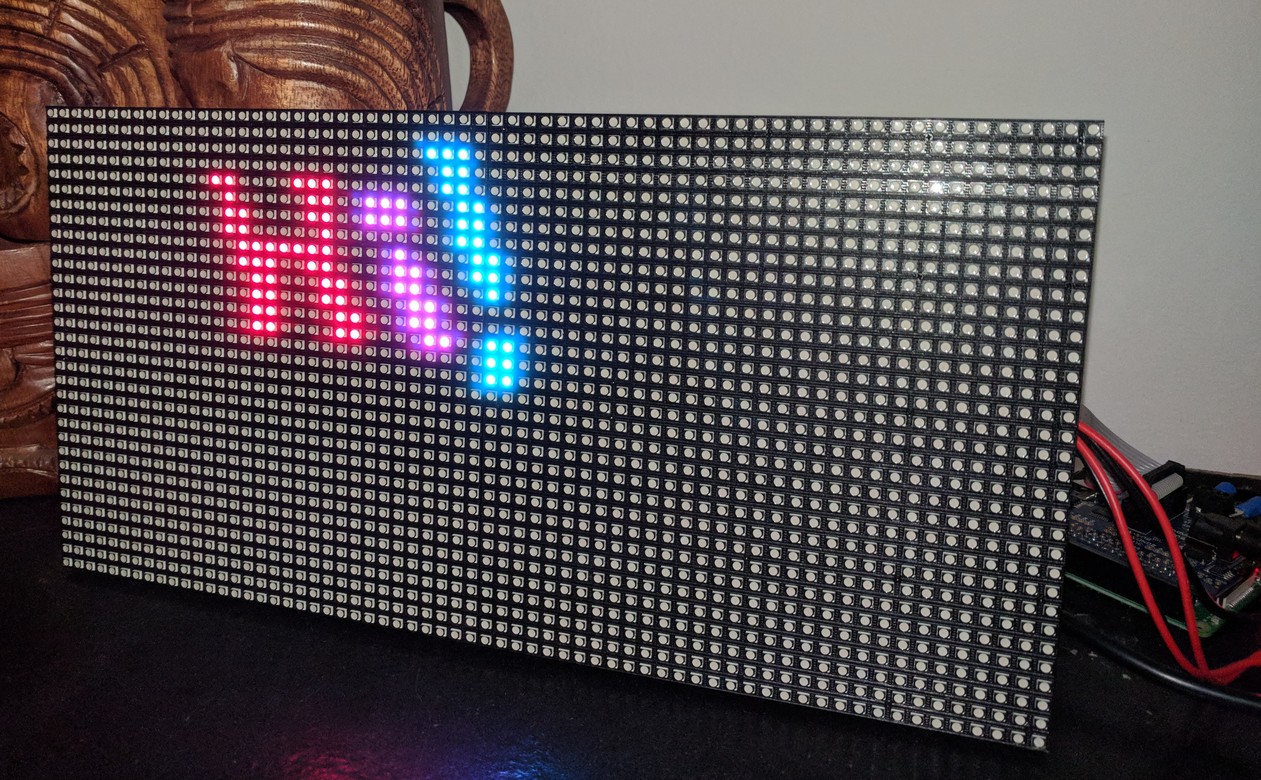Having taken advantage of a Black Friday sale at BuyaPi.ca and picked up a Raspberry Pi 3 Model B, I then needed something to do with it. I’m not sure how it popped into my head, but at some point I realized my bar absolutely needed a Times Square zipper-type LED display. I mean, it seems so obvious in retrospect.
At first I thought about making one but then I thought “hahah yeah right no”. Luckily Adafruit caters to people of a similar mindset, so I got myself a superfancy 64x32 RGB LED matrix. The assembly tested my very rusty soldering skills (and also made me realize how my near vision has degraded in the past ten years…), but it powered up just fine!
After that, I thought it would be a neat trick to let visitors draw on the matrix. Of course I don’t know who would actually bother doing that, at least more than once, but I think it would sound cool to mention at a party. Jenn Schiffer’s awesome Make 8-Bit Art! site seemed like a good starting point, so I grabbed the code and started poking around.
The first problem was that I needed to export a pixel-by-pixel version of the drawn image, such that each square maps to a single pixel that in turn will map to a single LED. So I needed a 64x32 image, but the PNGs generated by Make 8-Bit Art are scaled up much larger.
That didn’t end up being very difficult in the end. I just sample one pixel in the middle of each square and build that into a new image. I created a pull request with my modifications, although I don’t know how generally useful this would be.
Next was the task of creating a web service to take the resulting image and display it. I followed the Adafruit guide that recommends using the rpi-rgb-led-matrix library by hzeller and got the demo going. The web service itself was simple, as I only needed to support uploading a picture and sending it to the LED matrix, with code for the latter already existing in the rpi-rgb-led-matrix package.
However, writing to the matrix requires root privileges, and I didn’t want to run my web server as root. So instead, I made a very simple daemon that runs as root and takes commands over Redis. The Flask app now handles only file uploads and sending Redis messages to display an image or clear the matrix.
I found out later that the guide I was following was using an out-of-date fork of rpi-rgb-led-matrix. Adafruit had forked it to add Python support; however, it was done a bit hackily, so I had to run my daemon from the rpi-rgb-led-matrix directory. I just noticed that Adafruit has updated their guide to use the latest code in that library, which had more thorough Python support added some time ago, so I’ll be updating mine at some point. Hopefully this will let me run the daemon from its own directory.
I also set up a WSGI server and got it running with systemd and nginx (see the README for details). Unfortunately I had less luck running the daemon automatically. Running it via systemd would result in my Raspberry PI locking up. Running it from a terminal works fine. I’m guessing the difference is somehow environment related, but as of yet I haven’t been able to figure it out. For now, I run the daemon in a screen session. Maybe this is something else that will be fixed by converting to the latest rpi-rgb-led-matrix code.
Last was hacking up Make 8-Bit Art to use my new web service. I added some code to the pixel-by-pixel feature to use the Fetch API to send the created image up to the Pi and then display it. It’s hacky but works fine! Since this is almost certainly of little use to the upstream repository, I created a branch but haven’t bothered submitting a pull request.
Since getting this working, I’ve actually had a few people play with it, including my daughter. The display is really nice, with very vivid colours, so it’s an interesting combination of retro and modern technologies.
Here’s an example of something simple drawn in the app:

And the resulting image on the matrix:

It’s a really intense matrix, and I suck at photography, so here’s another shot, with the flash on, so you can see the matrix itself a bit better:

My next step is to simplify my fork of Make 8-Bit Art (I don’t need any of the other export options, maybe just “Save” and “Display” buttons). After that, I’d like to extend it to allow more than one image to exist on the Pi at a time. Then I could add a feature to my web service to choose from previously uploaded images, and even to create animations.
All in all this has been a fun little project, and as with most, if not all, open-source software, I couldn’t have done it without a lot of help. Thanks to Adafruit, Jenn Schiffer, and hzeller in particular!